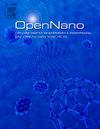蛋白- rna复合物转导系统NanoMEDIC介导的SpCas9靶向基因去除
Q2 Pharmacology, Toxicology and Pharmaceutics
引用次数: 0
摘要
CRISPR-Cas9系统提供了强大的基因组编辑能力,但脱靶效应仍然是一个关键的限制。直接递送Cas9蛋白与引导RNA (gRNA)的复合物可以通过限制暴露时间来减轻这些影响。我们之前开发了NanoMEDIC,这是一种病毒样颗粒系统,可以在体外和体内传递Cas9/gRNA核糖核蛋白(RNP)复合物。在本研究中,我们在人胚胎肾源性细胞系293FT和人胶质母细胞瘤源性细胞系NP-2中比较了nanomedic介导的传递与基于基因切除报告基因的质粒转染。在这个模型中,Cas9/gRNA靶向的DNA序列来源于一种人类致癌逆转录病毒,人类t细胞白血病病毒I型(HTLV-1)。无论目标DNA是瞬时转染还是整合到染色体DNA中,NanoMEDIC都实现了高效的基因去除编辑,每个细胞的Cas9输入量显著降低。编辑位点的测序显示,nanomedic介导的Cas9/gRNA递送产生58.3% - 87.5%的无插入或缺失的去除编辑DNA (indels),而使用质粒转染则为8.3 - 29.4%。这些数据表明,nanomedic介导的Cas9/gRNA传递具有很高的编辑精度。这可能反映了Cas9的短暂存在,它可以通过非同源末端连接(NHEJ)快速修复,而不延长核酸酶活性。总的来说,我们的研究结果突出了NanoMEDIC在需要精确、无indel基因组修饰的应用中的潜力,并支持其作为基于dna的递送或涉及持续Cas9表达的系统的更安全替代方案。本文章由计算机程序翻译,如有差异,请以英文原文为准。
Targeted gene removal by SpCas9 transduced by a protein-RNA complex transduction system NanoMEDIC
The CRISPR-Cas9 system offers powerful genome editing capabilities, but off-target effects remain a key limitation. Direct delivery of Cas9 protein complexed with guide RNA (gRNA) can mitigate these effects by limiting exposure time. We previously developed NanoMEDIC, a virus-like particle system shown to deliver Cas9/gRNA ribonucleoprotein (RNP) complexes both in vitro and in vivo. In the present study, we compared NanoMEDIC-mediated delivery with plasmid-based transfection using a gene excision reporter in the human embryonic kidney-derived cell line 293FT and the human glioblastoma-derived cell line NP-2. In this model, the DNA sequence targeted by Cas9/gRNA was derived from a human oncogenic retrovirus, human T-cell leukemia virus type I (HTLV-1). NanoMEDIC achieved efficient gene removal-editing with significantly lower Cas9 input per cell regardless of whether the target DNA was transiently transfected or integrated into chromosomal DNA. Sequencing of edited loci revealed that NanoMEDIC-mediated Cas9/gRNA delivery produced 58.3 – 87.5 % removal-edited DNA without insertions or deletions (indels), compared with 8.3 – 29.4 % using plasmid transfection. These data suggest a high editing precision of NanoMEDIC-mediated Cas9/gRNA delivery. This likely reflects the transient presence of Cas9, which enables rapid repair through non-homologous end joining (NHEJ) without prolonged nuclease activity. Collectively, our findings highlight the potential of NanoMEDIC for applications requiring precise, indel-free genome modifications and support its use as a safer alternative to DNA-based delivery or systems involving sustained Cas9 expression.
求助全文
通过发布文献求助,成功后即可免费获取论文全文。
去求助
来源期刊

OpenNano
Medicine-Pharmacology (medical)
CiteScore
4.10
自引率
0.00%
发文量
63
审稿时长
50 days
期刊介绍:
OpenNano is an internationally peer-reviewed and open access journal publishing high-quality review articles and original research papers on the burgeoning area of nanopharmaceutics and nanosized delivery systems for drugs, genes, and imaging agents. The Journal publishes basic, translational and clinical research as well as methodological papers and aims to bring together chemists, biochemists, cell biologists, material scientists, pharmaceutical scientists, pharmacologists, clinicians and all others working in this exciting and challenging area.
 求助内容:
求助内容: 应助结果提醒方式:
应助结果提醒方式:


